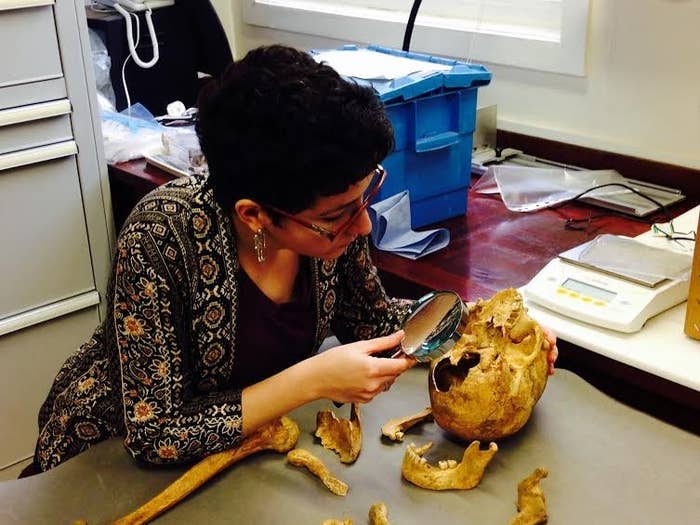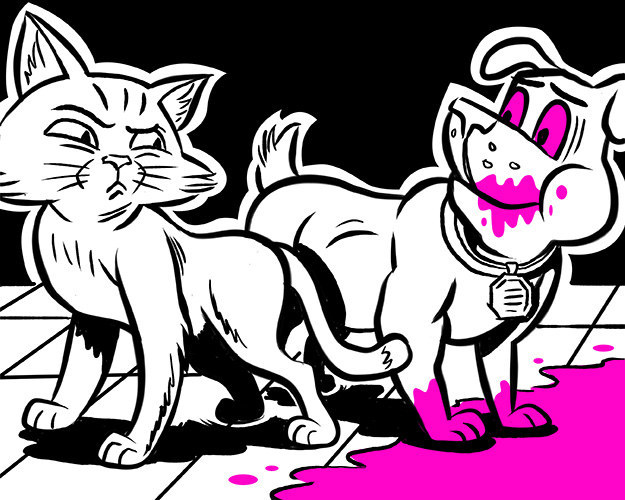As dog owners, we want to act in their best interests. Getting their nutrition right and timing their walks are two examples of this. Vets claim that the answer to this particular question is crystal clear. They suggest waiting at least two hours after your dog has eaten a meal before taking them for a walk. This is due to the fact that taking your dog for a walk right after eating may cause bloating or even gastric dilatation-volvulus (GDV). Make sure your dog has access to water at all times to prevent them from consuming too much liquid in addition to their food. Large amounts of air are swallowed by dogs when they drink, which increases the risk of GDV. GDV is a dangerous condition that needs to be treated right away by a veterinarian. Learn more about GDV, the ideal times to feed and walk your dogs, and whether it is a good idea to exercise your dog on an empty stomach by continuing to read.
The risk of bloating and GDV is the main reason to postpone walking your dog right after eating. Other activities that could take place right after eating are subject to the same dangers. For instance, you should try to prevent your dog from playing or running around the house or garden after they’ve finished eating a bowl of food. Bloating is an accumulation of gas in a dog’s stomach, just like it is in humans. When the dog makes sudden movements during exercise or play, the stomach rotates as a result of the trapped air. The 8 signs of GDV in dogs include:
GDV is an uncommon condition, but it has the potential to be fatal. Consult a veterinarian right away if you notice any of your dog’s GDV symptoms. Dog bloat.
GDV develops without warning and can progress quickly. It is always an emergency. However, a “simple bloat” is what is meant when stomach swelling is present alone. This type of bloating may develop on its own and disappear on its own in a matter of hours or even days. If you have any questions, it is always best to consult a veterinarian.
While all dogs have the potential to bloat, larger and deep-chested breeds, such as:
You may want to learn more about the best foods to feed dogs with sensitive stomachs if your dog is experiencing stomach or digestive issues (which a licensed veterinarian has confirmed are unrelated to GDV). Other risks of walking a dog after eating .
Taking your dog for a walk (or playing with them) right after feeding them poses the following risks as well:
The breed, level of activity, and type of food you’ve given the dog all have an impact on how long it takes for food to be digested. But generally speaking, it takes 6 to 10 hours. The body of a dog can digest wet food in as little as 4 hours, which is quicker than dry food.
Veterinarians generally advise waiting at least 2 hours after eating when considering taking a dog for a walk. There are, however, some exceptions to this rule. Depending on how much food was consumed and how quickly it was digested, you should wait a certain amount of time before taking your dog for a walk after feeding them. It is best to adhere to the following general principle:
It’s crucial to keep in mind that, aside from the dangers of GDV, walking is beneficial for dogs’ digestion. It helps manage typical digestive issues like canine constipation and keeps their poop regular and healthy. When should I feed my dog? Mature dogs require two meals per day, typically in the morning and evening. Puppies require three meals per day after reaching about 4 months of age. Normally, you should wait four to six hours between feedings for a fully grown dog. Before they eat again, this interval enables your dog to properly digest previous meals.
The majority of professionals advise morning and afternoon/evening walks for dogs. Your first walk should be the longest of the day, followed by a slower, more leisurely walk later in the day.
How often should I take my dog for a walk? You should take your dog for a walk at least twice daily. This could be divided into 20 or 30 minutes of evening and morning walking. Your walk’s duration and schedule will depend on a variety of factors. These factors include the dog’s breed and size, age and health, temperament and level of energy, as well as the owner’s schedule.
Poop schedule and eating and walking In this section, we discuss taking the dog outside after meals rather than walking him. (Of course, if you live in a city or town without a garden, this may amount to the same thing.) Because dogs (and especially puppies) frequently need to poop shortly after eating, it’s crucial to make this distinction so that you can encourage them to develop positive toileting habits. Puppy poop occurs up to three times more frequently than adult dog poop. Additionally, puppies typically poop between five minutes and an hour after feeding, with immediate post-feeding poop being more common in puppies. For this reason, be sure to take your puppy outside as soon as he finishes his meal, both for practical reasons and to begin potty training. Your dog’s dietary requirements and bathroom habits will alter as he ages. Some dogs will continue to poop right away, while others might not go for about 30 minutes after eating. This is totally normal. In fact, healthy dogs continue to urinate shortly after eating because their stomach and colon are connected by nerves, which sets off the reflex to urinate. Additionally, it’s normal for your dog to poop one to five times per day. But keep in mind: Dogs fed filler-heavy, low-quality food will urinate more frequently than those fed nutritious foods.
Dog owners frequently worry that if their dog doesn’t eat, they will feel weak, lethargic, and hungry and that they won’t enjoy their exercise. However, that’s not necessarily the case.
While providing your dog with the proper nutrients is crucial, experts say that as long as your dog is eating a balanced diet, going for a morning walk without food is completely safe. Dogs can go for extended periods without eating because they are built to do so (as long as they are healthy, of course). While we would never advise you to put your dog on a fast, healthy dogs can survive for an entire week on only water and no food. Therefore, if you and your dog prefer to walk before eating, you can do so in a safe manner.
Even though there are unquestionable benefits to taking your dog for a walk after they’ve eaten, g. establishing a feeding and potty schedule. Additionally, there are some advantages to walking your dog before supper. Mainly these benefits involve reducing the chances of GDV occurring. However, it does not completely eliminate the possibility of experiencing a stomach twist. This is due to the fact that GDV is not always related to eating and can occur for other reasons. By forcing your dog to exert some energy (and burn some calories) before being fed, walking your dog prior to a meal may also help bring out your dog’s natural hunting instincts. There are certain guidelines regarding exercise and food, even if you walk your dog before eating. Veterinarians generally advise waiting at least 30 minutes before feeding your dog after a walk, so what are these and how long should you wait? Final thoughts.
By now, you should be aware of how long to wait before taking your dog for a walk after eating. The experts advise waiting at least two hours after a substantial meal before walking or even vigorously playing with your dog. This is done to lessen the likelihood of bloating and GDV, a condition that can be fatal and is more common in larger breeds. You should take your dog for a walk before they eat to further lower these risks. But there are pros and cons to this also. This walk/feed routine reduces the risk of GDV, but it may be difficult for you to potty train your dog. Since most dogs urinate or defecate shortly after eating, you may need to take your dog for a walk soon afterward (even if it’s just to take your dog for a quick trip to the nearest green space to use the restroom to avoid any issues with pooping in the house). Stick to the 2-hour window after eating before letting your dog engage in any strenuous activity or excessively enthusiastic play to be safe.
Be part of the adventure. For news, updates, and new launches, subscribe to our newsletter. Plus 10% off your first order.
Lets be friends. Get the most recent Beco news, updates on new launches, and special deals by subscribing to our newsletter. Plus 10% off your first order!.
We use essential cookies to make our website work. In order to improve the functionality of our website and deliver a customized experience, we also use performance and functional cookies, which store and access information about your interactions with our site. On our website and throughout the Internet, we and third parties also use advertising cookies and other tracking technology for engagement and advertising purposes. Our T&Cs contain more information about our cookies.
The Very Basic Concern
My dog loves me more than anything. When I get home, he literally jumps for joy. He also follows me everywhere, including the bathroom. And occasionally, he “shares” his toys with me by putting them on my lap. Honestly, he’s the sweetest boy ever.
But the other night, I started to consider what my dog would do if I were to pass away suddenly at home. I imagined that he might have to eat my dead body because I would obviously not be alive to provide him with food. It goes without saying that I can’t stop thinking about this, even though, in the interest of full disclosure, I would totally want him to do it if he had to.
In other words: How fast, theoretically, would my starving dog eat my dead body?
Carolyn Rando, Ph.D., is a forensic anthropologist at the UCL Institute of Archaeology and CASE Academy. One of her favorite topics of research is animal scavengers. So, naturally, we asked her questions about pets eating their owners.

But cats are still “superior,” aloof beings, at least in the following case.

FAQ
How long before dogs eat their owners?
Dogs can go a little longer than humans without eating, but eventually the body will start to rot past the point where the dog would want to eat it. If the human meat is still sufficiently fresh, I would say that five to seven days would be the ideal window to begin eating.
Is my dog waiting for me to eat?
Conclusion. Dogs may not always have manners, but they may have been taught to wait for you to eat out of respect or after observing you modeling certain behaviors. Due to their social nature, dogs may simply not be interested in eating when left alone and will eat when you return.
Should your dog eat after you?
Eating your dinner before him is therefore a completely meaningless concept to dogs. Certainly, it’s important for your dog to behave properly around food, especially if it’s your food, but letting him finish his meal before you won’t give him the impression that he’s in charge.
Why do dogs not eat humans?
Dogs have evolved to view humans as pack members, even as superior alpha-pack members, with whom they have a cooperative relationship, which is why they don’t eat humans like many other wild animals do.